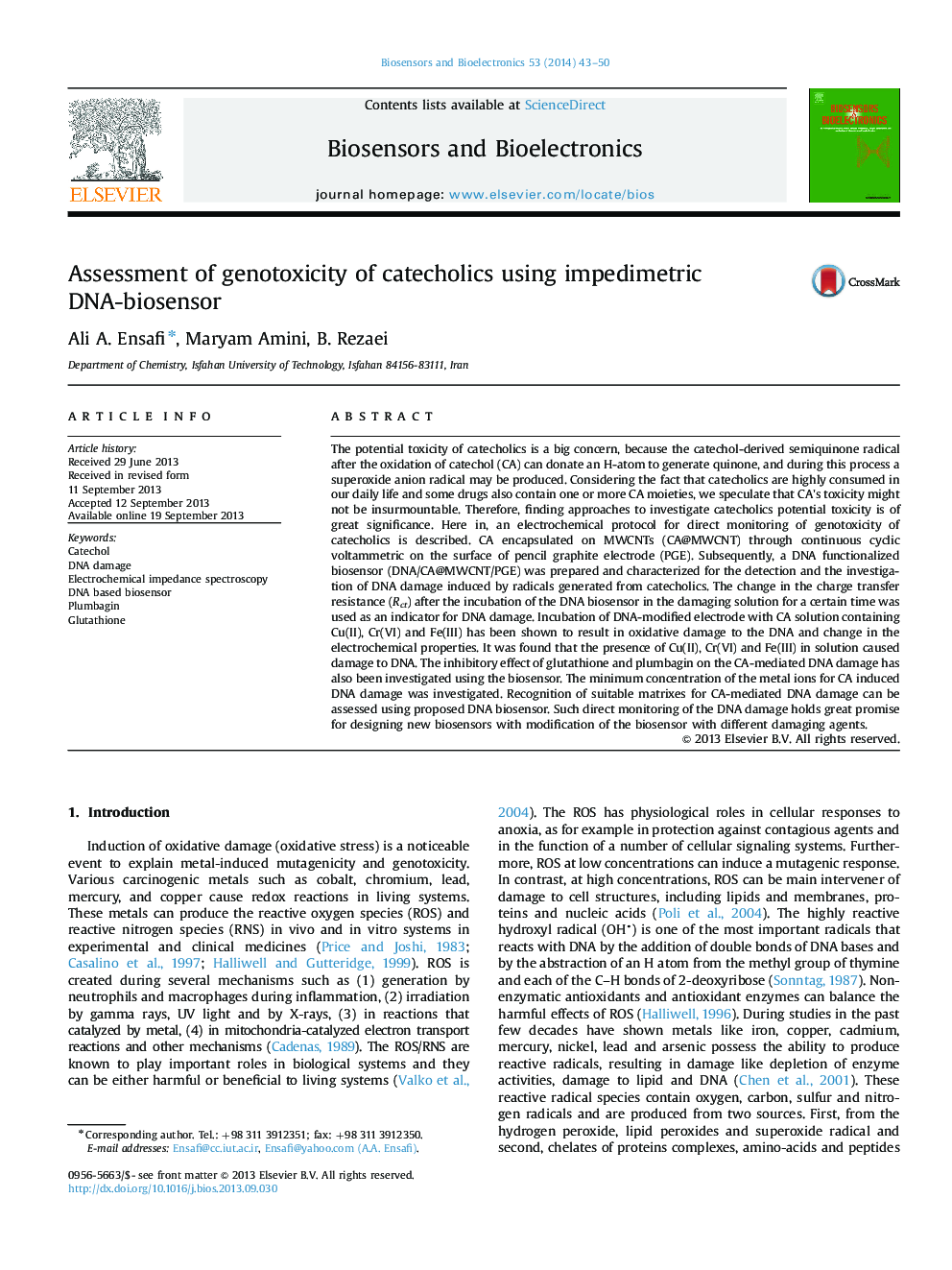| کد مقاله | کد نشریه | سال انتشار | مقاله انگلیسی | نسخه تمام متن |
|---|---|---|---|---|
| 866670 | 1470978 | 2014 | 8 صفحه PDF | دانلود رایگان |

• Catechol encapsulated on MWCNTs on a pencil graphite electrode was prepared.
• DNA damage induced by radicals generated from catechol was characterized.
• Electrochemical method was used to direct monitor of genotoxicity of catechol.
• The presence of Cu(II), Cr(VI) and Fe(III) on the radicals generated from catechol was studied.
• Inhibitory effect of glutathione and plumbagin on the catechol mediated DNA damage was investigated.
The potential toxicity of catecholics is a big concern, because the catechol-derived semiquinone radical after the oxidation of catechol (CA) can donate an H-atom to generate quinone, and during this process a superoxide anion radical may be produced. Considering the fact that catecholics are highly consumed in our daily life and some drugs also contain one or more CA moieties, we speculate that CA's toxicity might not be insurmountable. Therefore, finding approaches to investigate catecholics potential toxicity is of great significance. Here in, an electrochemical protocol for direct monitoring of genotoxicity of catecholics is described. CA encapsulated on MWCNTs (CA@MWCNT) through continuous cyclic voltammetric on the surface of pencil graphite electrode (PGE). Subsequently, a DNA functionalized biosensor (DNA/CA@MWCNT/PGE) was prepared and characterized for the detection and the investigation of DNA damage induced by radicals generated from catecholics. The change in the charge transfer resistance (Rct) after the incubation of the DNA biosensor in the damaging solution for a certain time was used as an indicator for DNA damage. Incubation of DNA-modified electrode with CA solution containing Cu(II), Cr(VI) and Fe(III) has been shown to result in oxidative damage to the DNA and change in the electrochemical properties. It was found that the presence of Cu(II), Cr(VI) and Fe(III) in solution caused damage to DNA. The inhibitory effect of glutathione and plumbagin on the CA-mediated DNA damage has also been investigated using the biosensor. The minimum concentration of the metal ions for CA induced DNA damage was investigated. Recognition of suitable matrixes for CA-mediated DNA damage can be assessed using proposed DNA biosensor. Such direct monitoring of the DNA damage holds great promise for designing new biosensors with modification of the biosensor with different damaging agents.
Journal: Biosensors and Bioelectronics - Volume 53, 15 March 2014, Pages 43–50